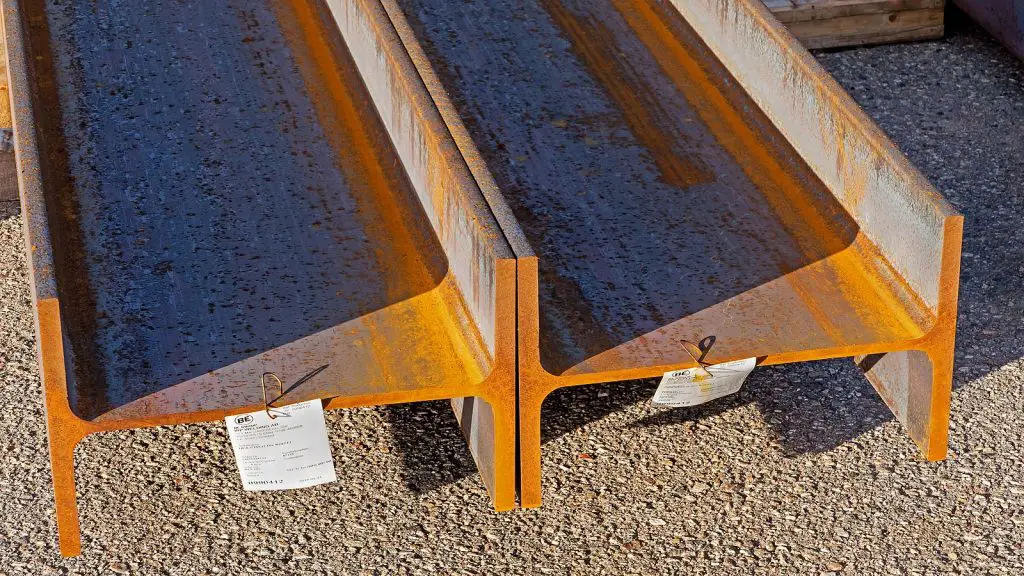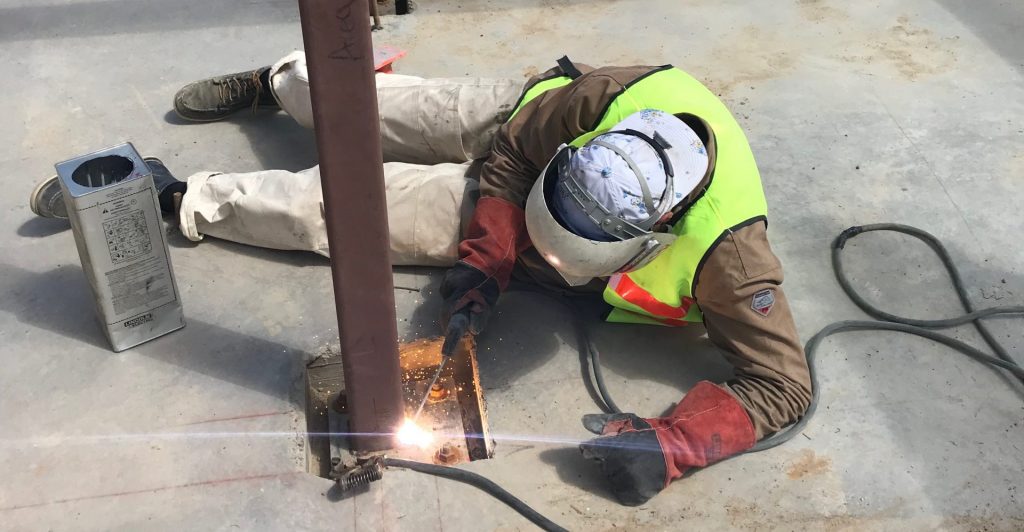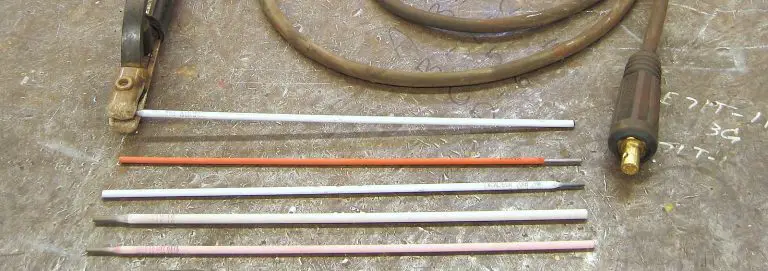MIG Welding Vs Stick Welding – Pros And Cons
This post contains affiliate links.
MIG and Stick welding both have their benefits for different projects. Although they are vastly different processes, they can be used interchangeably in some situations.
This article will cover the pros and cons of each process, and it should help you decide which is best for your needs. If you go through welding school, you’ll have to learn both processes and spend plenty of time perfecting each.
If you’re a newbie wanting to learn how to weld, you may gravitate more towards one or the other.
MIG welding vs stick welding is a debate as old as time, and many welders will have different opinions on this.
Being proficient at both will allow you to be a more versatile welder. Employers will be more willing to look at your resume if you possess both stick and MIG certifications.
For newbies looking to purchase their first welder, understanding the differences between stick and MIG is a great way to narrow down your options. Some multiprocess machines can perform both, but you’ll usually have to pick which process you’ll learn first.

Benefits Of MIG Welding
MIG is a great process for fabrication, especially in the shop. The external shielding gas used means that there is no slag to clean up after you finish your bead. You will have to purchase a gas cylinder and get it refilled, but these cylinders can be placed on welding carts and wheeled around easily. Stick welding produces lots of slag, and this can be troublesome for trying to fabricate and save time.
MIG is also a faster process than stick welding. Since you don’t have to replace your electrode as often, you can lay down bead after bead without having to worry. The larger spools of MIG wire can last a long time.
MIG wire spools come with hundreds of feet of wire. Since stick electrodes are only 14″ long, you can see how much faster MIG can be. Not having a bunch of rod stubs laying on the floor will allow you to fabricate faster with less of a mess.

Hard wire MIG allows the welder to run beads in all positions. You can weld vertical downhill, vertical uphill, and even diagonally with this process. Learning to weld in the flat, horizontal and overhead positions is also manageable with the MIG process.
Stick welding positions are dictated based on which rod you use, so you’ll have to use multiple rods for different positions. Some rods can only weld downhill, while others will only allow uphill. However, most stick rods can tolerate the flat and horizontal positions.
Different bead styles can be achieved with MIG. There are loads of patterns that a welder can use, and these will produce beads from thin stringers to wide weaves. The MIG puddle tends to “freeze” pretty fast, so you don’t have to worry about it dripping down on you.
Welders can use the traditional “push” or “pull” methods, or they can play around with patterns – a series of cursive e’s or a series of triangles can be very productive in producing a wider bead. You can even achieve the “MIG like TIG” look with lower wire speeds. This look is found on car parts and 4 wheeling accessories.
Stick welding doesn’t allow as much freedom with bead styles and patterns. Low hydrogen rods have to be “dragged” or else the slag will get trapped in the puddle and weaken the weld.
Since hard wire MIG welding doesn’t produce slag, you can push or pull the puddle in any way you please.

The wide range of settings for MIG is also beneficial. The wire speed, voltage and gas flow can be manipulated to get different bead styles. Stick welding does not allow this because amperage is the only setting that can be changed. Polarity can be changed with stick welding, but DC positive is most common.
MIG also has many different wire types available. You can get stainless steel wire, aluminum wire, flux core wire and dual shield flux core wire. If you already have a MIG machine, you have many options for the type of filler metal you use.
Stick welding electrode choices are a bit more limited. Although there are many types of rods, they are best for welding mild steel only. Aluminum stick rods are available, but they tend to produce subpar welds. Stainless stick rods are also available, but are much less common than stainless MIG wire.
Benefits Of Stick Welding
We like stick welding because it is a more mobile process with less gear required than MIG. It is the choice of most mobile welders due to the lack of excessive equipment. An engine drive, leads, and a box of electrodes is all you need. Stingers and ground clamps are necessary as well, but these can be purchased for affordable prices.
There are also smaller stick welding machines that plug right in to a 120v wall outlet. With the availability of these smaller machines, hobbyists and home owners can stick weld in their garage or workshop easily.

MIG cables are limited in length, and it can be hard to weld at farther distances. With stick, you can purchase leads of any length. It is possible to stick weld 500 feet away from your welding machine if your leads are long enough; this is simply not possible with the MIG process.
In contrast to other processes, stick welding leads are very simply constructed. The inside is just tightly woven copper strands, and the exterior is just a tough rubber coating. This allows you to splice leads and choose custom lengths.
MIG cable requires the wire to run through it smoothly so it can reach the weld. The longer your MIG cable is, the more likely it is that the wire will get jammed. This is why having a 100 foot cable for MIG would be very foolish.

Stick leads do get pricey (up to $3.50 a foot) but a rig welder having 200 foot leads is not uncommon. This allows for more versatility on the job site. If you plan on mobile welding, having a long set of leads will allow you to tackle most jobs.
100 feet of ground lead and 100 feet of stinger lead is a good place to start. Wider diameter leads will allow for more amperage, which means you can burn larger electrodes.
Since stick welding doesn’t require external gas, the operating costs are usually lower than MIG welding. If you have a machine and a pair of complete leads (cables), all you need is a box of electrodes. Stick electrodes are available in 5 lb, 10 lb, and 50 lb increments. The more you purchase, the cheaper it is per pound. One of these boxes can last a welder for quite awhile.
So, if you are looking for a cheaper way to get into welding, stick is a good process to consider.

Having electrode choices is also a huge benefit of stick welding. With over a dozen major rod types, there’s an electrode for every project. Although most electrodes are meant to weld mild steel, they vary in terms of penetration and the final look of the bead.
Stick electrodes have 4 number designations. Example: a 7018 rod has a (70) thousand pound tensile strength. The (1) indicates that it can be welded in all positions. The (8) indicates the type of flux on the rod, in this case a low-hydrogen iron powder. Hence the reason for calling these rods “low-hydrogen electrodes”.
For MIG, hard wire, flux core, stainless and aluminum are the main choices. This allows you to weld more types of metals, but they aren’t as specialized as certain types of stick electrodes.
Similar to MIG welding, stick electrodes come in different diameters based on how wide you want your weld to be. 5/32″ rods are some of the largest, and can lay down a wide bead very easily and penetrate thick steel. Stick rods come as small as 1/16″ in diameter, which can lay down very narrow beads.
3/32″ and 1/8″ stick rods are most common. They produce medium sized beads and can tackle a wide range of projects. An 1/8″ 7018 rod keg is found on just about any welders truck.

Stick welding is also a great process for outdoor applications. Since the rod produces its own gas, you can get away with stick welding in the wind, sleet, and even light snow. Leads are very water resistant and allow for this as well.
If you are trying to MIG weld when it’s windy, the wind can blow your shielding gas away. This can cause porous welds and is extremely frustrating. If you plan on welding in adverse weather conditions, stick welding is the best bet.
When Is MIG Not A Good Choice?
Welding outdoors can be tough with MIG. As mentioned above, strong winds can blow away the shielding gas, which can leave you with a bad weld. It is also harder to move the gas cylinder around on the job site; you can use a smaller cylinder, but refills will be required more often. All in all, it is just tougher to be mobile with a MIG setup.
Even medium sized gas cylinders are quite heavy, which will limit you for mobile projects.

If you want maximum penetration, hard wire MIG is not the best option. It doesn’t dig through mill scale as easily as stick welds, and the welds tend to be more brittle. Although the PSI strength rating is often the same as stick welding, hard wire welds just tend to crack more over time.
It is best to clean your metal and remove all contaminants if you plan on using hard wire MIG.
MIG welds require relatively clean metal to achieve a solid weld. Stick welds dig better through rust, grease, and even light paint. Cellulose stick rods (i.e. 6010’s) are especially good at welding on dirty steel due to their “digging” arc. MIG generally won’t tolerate these conditions nearly as well.
If you do want to MIG weld and achieve maximum penetration, dual shield flux core is worth looking into. This process uses the flux core wire AND a gas cylinder to achieve a double shielding atmosphere. This is best for welding on large industrial jobs, I-beams, etc.
MIG is not a great option for welders on a tight budget. In addition to the machine, cables and wire spools, you’ll also need a gas cylinder and gas refills from time to time. Cylinders are not cheap (but you can lease them), and refills aren’t cheap either. If you want to get into welding with a small amount of money, stick welding is a better choice.
Although MIG gas (75% Argon/25% Co2) is not extremely pricey, it does add up over time. Trips to the gas supplier can also eat away at your free time.
When Is Stick Not A Good Choice?
Stick welding is generally not a good choice for fabrication. Cleaning slag, replacing rods, and tough arc starts make it a more time consuming option for fabricating. It is a messier process, and rod stubs/slag all over the floor can get annoying after awhile.
Restarting a half burned rod can be very tough for beginners. It takes lots of practice and can result in wasted rods. With MIG welding, you can just pull the trigger and start welding your project. This is why MIG welding is the most common process for fabricators and shop welders.

If you plan on welding thinner material such as sheet metal, stick welding is not the best choice. The violent arc of a stick electrode tends to burn through thin material very easily. A low voltage MIG setup is a much better choice for welding thinner materials. You’ll burn through less and the final product will be better.
For aluminum applications, stick is a poor choice. Although aluminum stick rods are manufactured, they are really tough to use and often lead to subpar results. Even the best welders in the industry will struggle to weld aluminum with a stick electrode. They burn very sloppy, and TIG or MIG is always a better option for aluminum.
For high end interior work, stick welds don’t look the cleanest. If your work must be visually appealing, a MIG or TIG bead is a much better choice. Stick welds can be beautiful, but this takes lots of practice.
Dual Shield Flux Core (MIG Version Of Stick?)
In our opinion, dual shield flux core MIG is the MIG equivalent to a stick weld. It produces slag and penetrates similarly to a stick electrode. This process is generally done for structural purposes, and the beads can be very wide.
The wire has flux built in to produce shielding properties, but a gas cylinder is also used. The double shielding effect provides extreme penetration on steel. You can read more about MIG gas in our article here.
It’s a great option for covering ground, but is best used on thicker steels and bigger projects. If you’re proficient with stick, dual shield MIG should come to you relatively easily.

Should I Learn MIG or Stick First?
Most welding schools will have their students learn stick welding first. Once they run proficient beads and pass an AWS test, they will move on to MIG classes. That is the order that my welding school did things, but other schools may be different.
If you are signing up for individual classes, you often have to pick which process you want to learn. MIG welding is generally easier for beginners, since you can just pull the trigger and begin welding. Many folks taking welding courses will start off with MIG, since it is most popular.
Stick welding is one of the oldest welding processes, and beginners shouldn’t skip it. Learning to start an arc and running a straight bead is essential if you want to call yourself a welder.
For hobbyists and home owners, MIG is usually the best option. It will allow you to fabricate easier, and this is why you’ll see MIG welders in garages across America.
If you want to learn both processes, considering a multiprocess welding machine is a good idea. These smaller machines can run stick, MIG and TIG processes. If you need a garage setup with infinite welding options, a multiprocess machine is worth a look.
Featured image credit : Pxfuel.com







